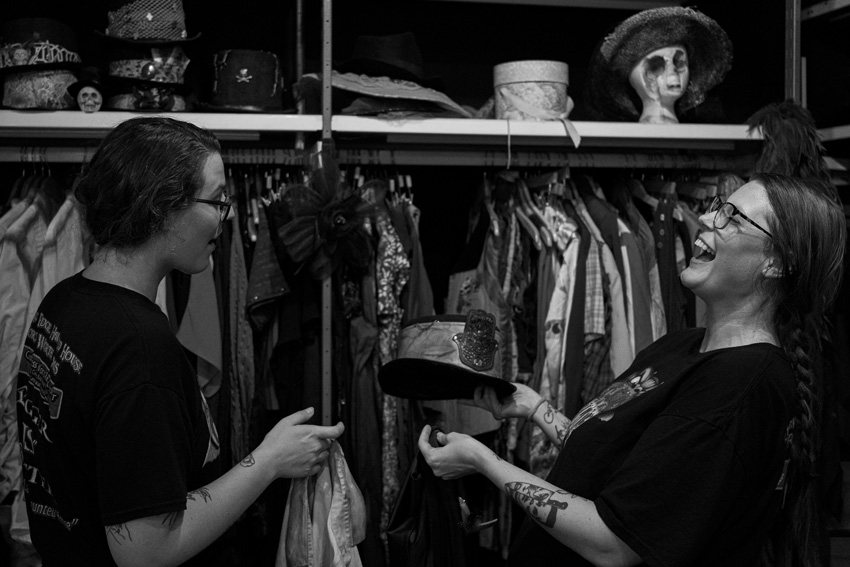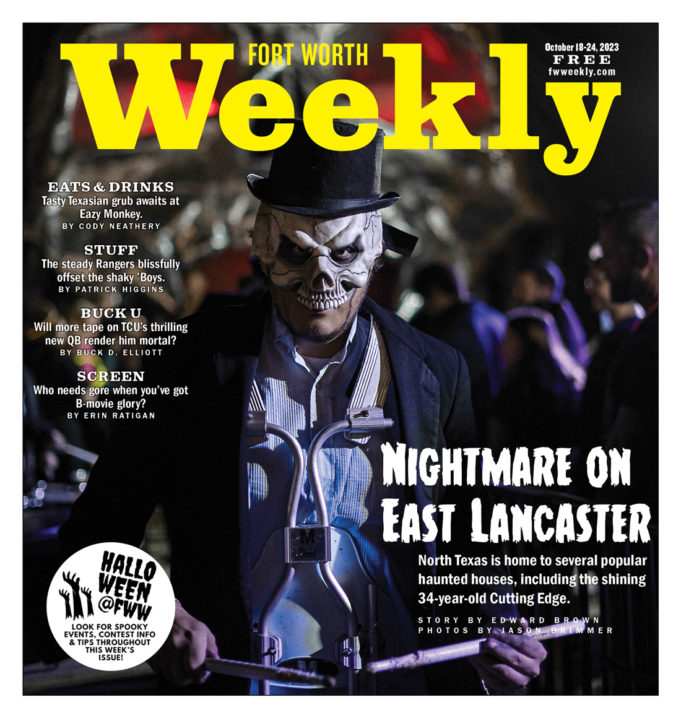Dressed in black with skeleton masks and Victorian-era top hats, the two dozen members of the Cutting Edge Drumline launched into a tightknit performance the other night as around 100 customers waited in line outside Cutting Edge Haunted House just southeast of downtown.
Watching over the explosion of snare drum rolls and cymbal crashes was Todd James, owner of the 34-year-old labyrinthine attraction that holds several world records for largest haunted house. James opened the first Cutting Edge on 6th Street in Austin in 1989 to capitalize on the foot traffic. Once the model proved popular, he returned to his hometown of Fort Worth to open what is now the lone Cutting Edge (1701 E. Lancaster Ave., 817-348-8444).
“These performers come from all over the country to audition for this group,” he said.
The owner’s pride was apparent as he took in the display of musical virtuosity. Nearby, a long, meandering line moved briskly as staffers shuttled the unsuspecting victims, er, customers into narrow halls echoing with a cacophony of high-pitched screeches and screams.
“We lean heavily on timing and teamwork, being able to stay in character,” James said of the extensive training and preparation that go into presenting roughly five weeks of weekend performances every October. “We don’t vocalize. We are big on letting our actors develop their own character through appearing and disappearing. If you love vampires or zombies, you can make that your character. We don’t handcuff you to any one style. We provide the atmosphere and sets. Then we get to scaring people.”
Inside, alternating rooms offer hiding spots for chainsaw-wielding ghouls to lunge at terrified patrons. One group of teenage girls formed a conga line, vainly seeking comfort through proximity as the headlights of an oncoming train and blaring horn sent the troupe sprinting down the hall. Being utterly terrified, as it turns out, is pretty fun, and not just for the ticket holders. Just as comedians live to hear laughs, Cutting Edge’s actors thrive on a good scream.
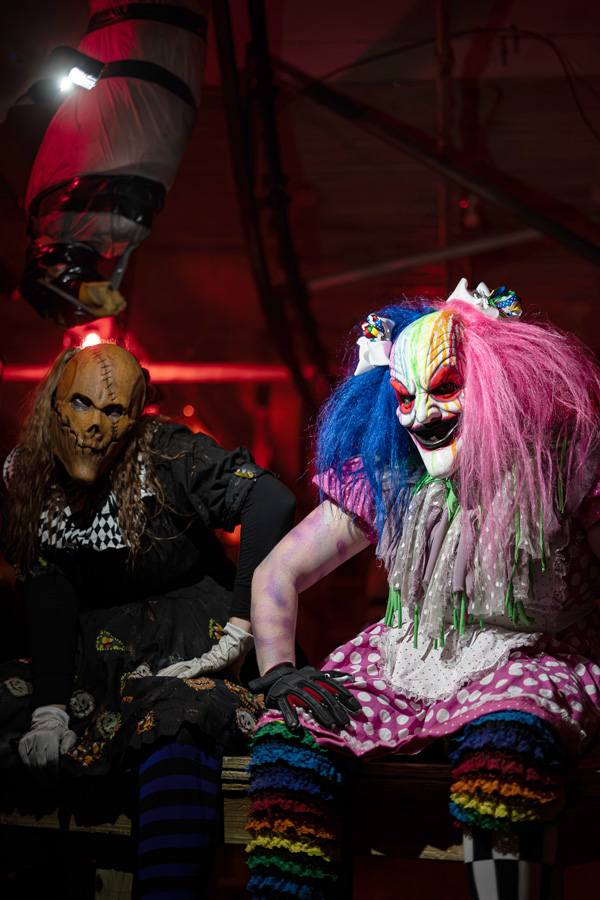
PHOTO BY JASON BRIMMER
“We fill up our scream tanks,” actor Sabrina said, referring to the genuine pleasure she and her colleagues receive from delivering a good scare. “Sitting behind something and waiting to scare someone brings out the adrenaline. You get hyped up.”
In the actors’ break room, the performers traded stories about this or that customer who took an early exit from the show (a “scare-out” in Cutting Edge parlance) or fainted. The actors quipped about one woman at a past event who was literally scared into labor, which technically counts as two scare-outs.
Safety is a priority at Cutting Edge. The halls are regularly checked to ensure they’re clean and dry, and a security team often working out of sight keeps tabs on patrons. Saturday’s tours featured heightened security due to worldwide terrorism concerns over the war in Israel.
North Texas is home to several popular haunted houses, including another Fort Worth fave, Hangman’s House of Horrors, plus Waxahachie’s Screams, Plano’s Dark Hour, The Parker House in Denton, and Dallas’ House of Spirits. While some of them are older than Cutting Edge, few have gained the national notoriety of James’ terror-inducing creation.
Driving his team’s decades-long success, he said, are his employees. Many of them have worked with James for a decade or more, and it’s their passion for the art of inducing blood-curdling screams that keeps Cutting Edge a consistently top-ranked haunted house, based on USA Today polls.
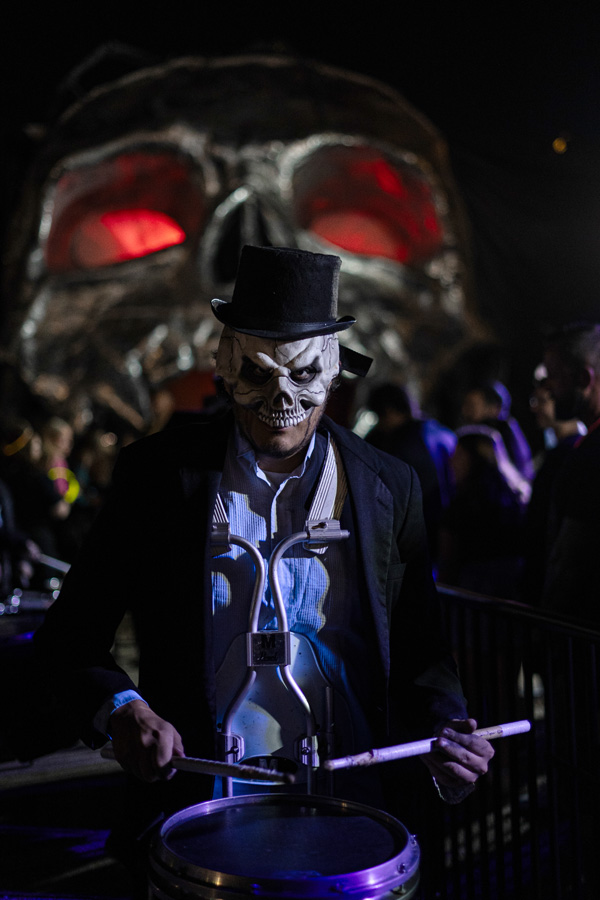
PHOTO BY JASON BRIMMER
Ghouls Wanted
“I’ve done everything in here except work as the cashier,” actor A-Train said with a laugh.
The 34-year Cutting Edge veteran added that his top jobs include training, property management, and acting. Actors performing as zombies, vampires, and demonic clowns are required to re-audition every year — no exceptions. First-time hires go through an interview and screening process before advancing to live tryouts during two October shows.
“If they are scaring the living daylights out of people, they’re in,” he said. “Everyone is a number when they come to the audition. We have no idea who they are.”
To help newbies prepare for auditions, Cutting Edge veterans lead the Boo U training course in September that teaches the rudiments of slashing and stalking. Before Saturday’s show, A-Train led a chainsaw class. Not everyone can … hack it.
“We’ve had newbies knock out veterans before,” he said.
A-train is a trove of Cutting Edge history. The haunted house has had as many as four locations before consolidating all its resources into Fort Worth in 2001.
“When we moved in, this space was a storage facility,” he said. “It needed a lot of work.”
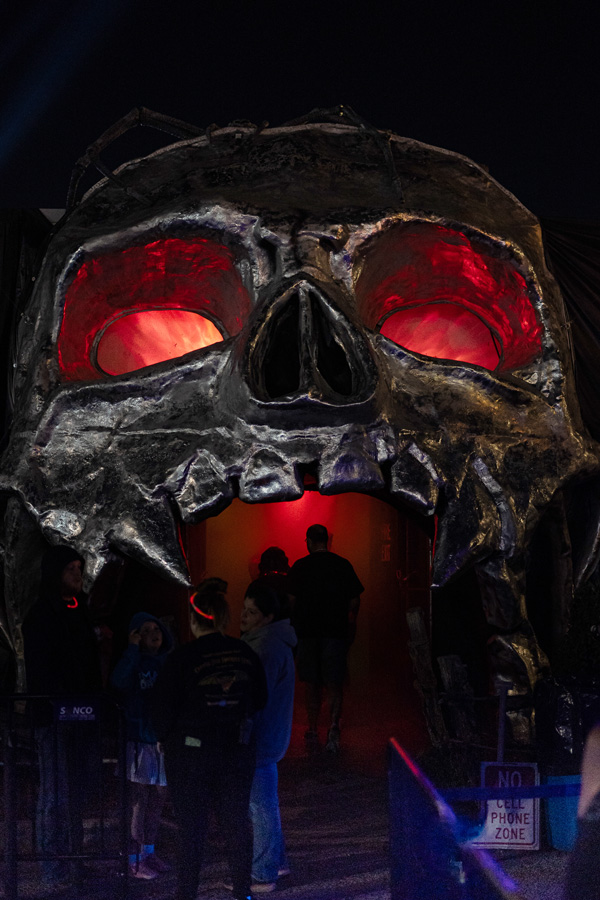
Creep Factor
Every show night, sisters Sabrina and Tori helm the costume and makeup room. As actors check in, they are assigned rooms before picking up outfits.
“Girls don’t have to wear dresses,” Sabrina said. “It’s not gender-specific. It’s built on the creature.”
Details matter, Tori added, especially for the actors.
“For the cemetery, we added dirt marks to the arms as if they were climbing out of a grave,” she said. “It adds something for the actor. You want to make sure they feel comfortable with that character.”
Once the actors are set, the sisters give them a once-over before sending them out to terrorize the populace. Sabrina said a surprising number of costumes are tossed or repurposed every year. The idea is to keep them fresh and new to customers.
“I don’t want people to see the same thing over and over again,” she said.
The duo agreed that their favorite job is acting. Setting Cutting Edge apart from other haunts, they concurred, is the ban on speaking or vocalizing.
“You have to put your body into the acting,” she said, “and think about that creepy factor. If I was hiding behind here, going ‘boo’ is almost generic. If you are behind a wall and slowly start from the ground and work your way up, it’s way creepier. When you talk to someone, you expect someone to say something back.”
After shows, the actors exchange stories. Sabrina shared one of her favorites about startling a young woman so badly that she clotheslined a bed railing before being immediately dragged away by her presumably equally terrified mates.
“I love watching men say they will protect their dates before jumping into her arms,” Sabrina said with a laugh.
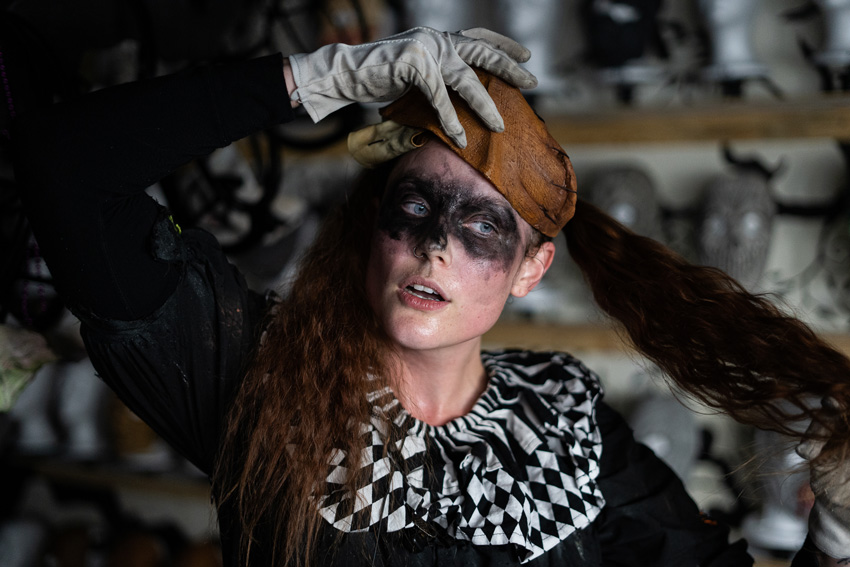
PHOTO BY JASON BRIMMER
Born to Scare
Actor Demetrius just marked his 12th season at Cutting Edge. The Niagara Falls native has a lifelong love of scaring the crap out of people.
“The first person I scared was my mother,” he said. “I was hiding behind the bathroom door and jumped out. I did get a whooping for that.”
The craft of scaring at Cutting Edge is challenging because it relies on timing and disappearance.
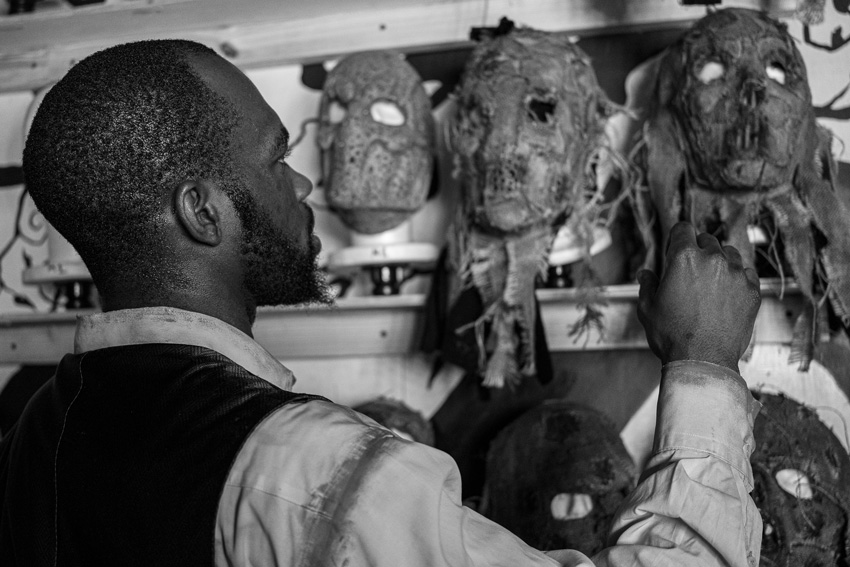
PHOTO BY JASON BRIMMER
“You have to be able to read a group,” he continued. “Some people are scared of something quick-moving. Some people are scared of loud noises. Before they come in my room, I listen to the room before me. If the room before me has a swamp or cemetery setting, I know they were scared of something fast or loud. When you hit them, you dart away. They are thinking, ‘Where was that?’ We come at them from all different angles.”
Demetrius reps one of a handful of “icon costumes” that recur every year. His includes a scarecrow mask, top hat, and meatpacking apron.
“I like to go for their legs,” he said. “A lot of people are scared of people coming at your feet.”
Training for October’s big shows requires studying horror movies and staying in shape.
“I study how the villains move,” he said. “You can’t walk around like a normal person. I go to other haunts to see how they scare. This work is physically tiring. I work out five, six days a week.”

PHOTO BY JASON BRIMMER
Darkness Everywhere
Cutting Edge’s sets are designed with minimal lighting, said set designer Braden, because darkness is free and everyone is scared of it. The set designer said construction begins in earnest every January and that he’s constantly brainstorming next year’s rooms.
“We are building up until Halloween,” he said. “Some sets are smaller and take a few months. Others won’t open until years later.”
The idea behind Cutting Edge, he continued, is that of a random nightmare.
“My favorite moment,” he added, “is seeing the first group walk through a new set. We don’t take down certain sets. One is the world’s longest clothing closet.”
Braden is an expert in lighting — an adept tool for distraction as costumed ghouls stalk semi-blinded horror-seekers.
“Teamwork is key,” Braden said. “After you scare someone, you want to disappear. They freak out. They don’t know where you went. In horror movies, when the camera pans back and we see that [the monster] is gone, that’s the scary part.”
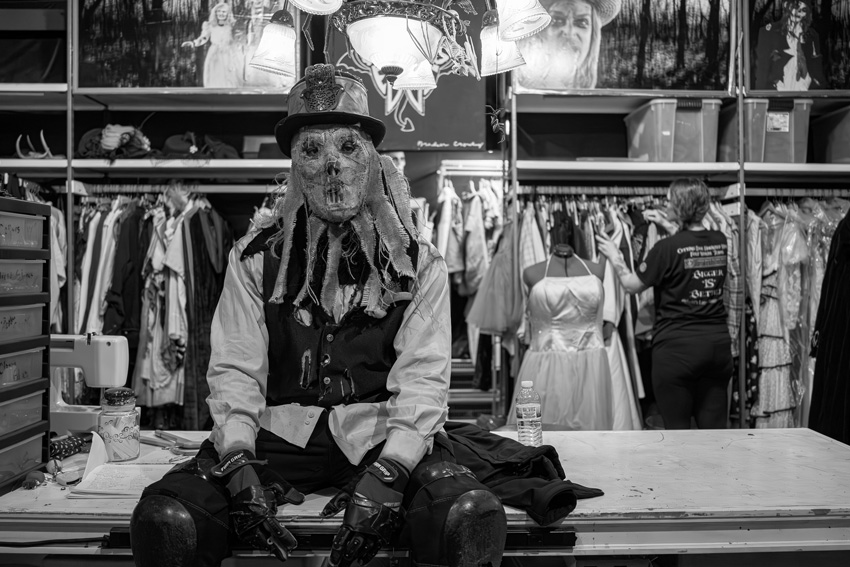
Safety First
During Saturday’s show, a female actor nursed a small welt on her face with an ice pack. Those incidents are increasingly rare, said Jon. The head of Cutting Edge security said several policies and steps have been taken in recent years to improve safety for visitors and the haunted house’s troupe.
“We try to be known and present at all times,” he said. “I have guys in the parking lot. We have more backdoor corridors to move around when we need to secure people. It’s natural to have a reaction to a scare. We train our actors to tell the difference” between an honest reaction and something inappropriate.
Depending on the incident, Jon’s security team may approach the customer directly with a warning. Serious attacks can be dealt with by Fort Worth police, who maintain a presence at every show. The new distancing protocols that started during the pandemic and were kept afterward also improve public safety, Jon said, because people are more likely to behave when they aren’t clumped into large groups.
“The actors don’t touch,” he said, “so the customers shouldn’t touch.”
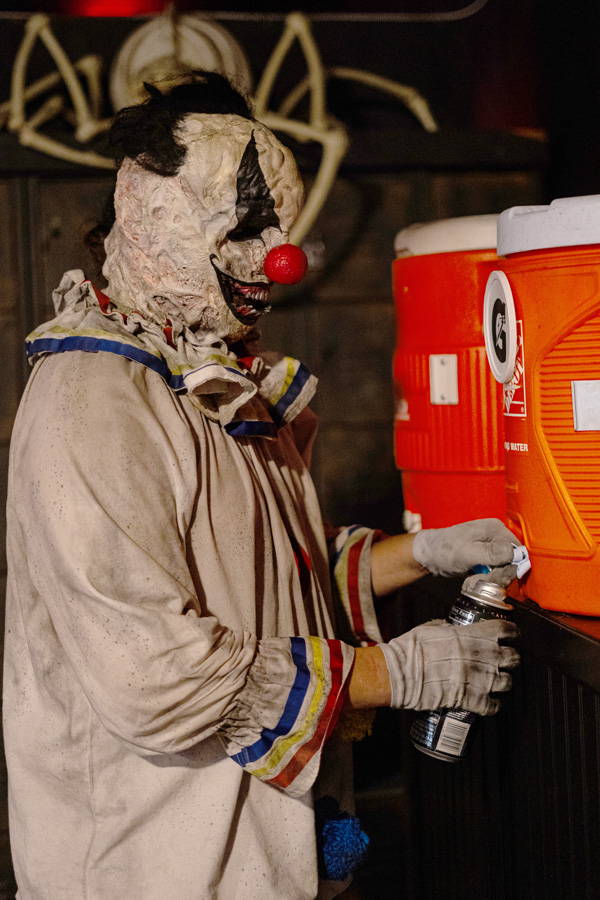
PHOTO BY JASON BRIMMER
Elephant in the Room
“Putting a room together,” said set designer/medic Brent, “is like eating an elephant. When you come up with a plan, you have this baby elephant. As we build out our set, we ask, ‘What if we do this? What if we do that?’ Sometimes, it’s two or three years down the line before we finish because we get busy.”
The actors may have a completely different approach to using a space than originally intended, he added.
“We don’t find that out until someone tells us,” he said. “It’s like you’re walking into a house that has furniture, and it looks good. After a while, you decide you’d rather have the couch over there. You have to have an open mind about it. Sometimes you can make those adjustments by the end of the first show. Other times, you have to wait until the next season.”
Brent recently finished Dragon’s Lair, a medieval castle where monks worship a frighteningly realistic animatronic dragon. Every detail, from the floor to ceiling, has to be consistent to convince viewers they’re in a fantastical world.
“We try to immerse you in this as much as possible,” he said. “We want you to feel like it’s real. It’s the little things that will give them that experience all the way through.”
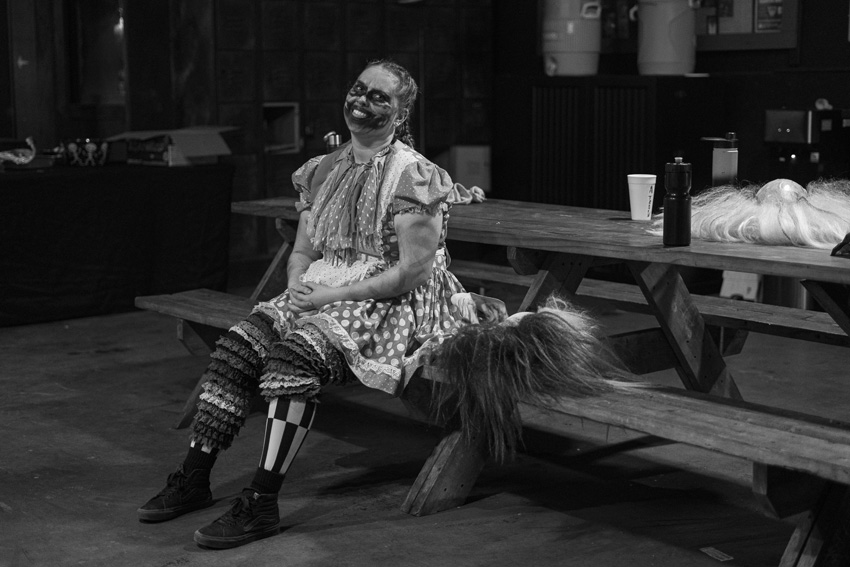
PHOTO BY JASON BRIMMER
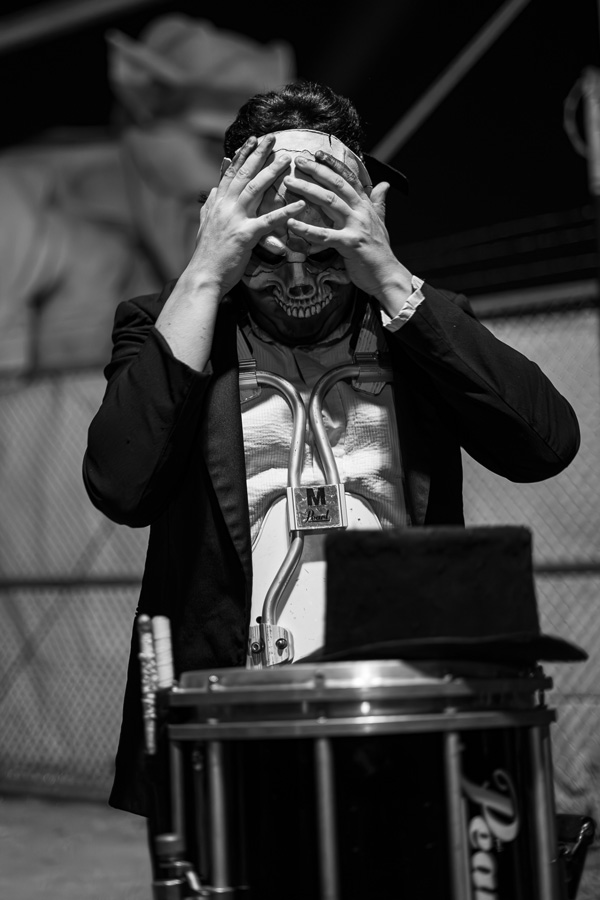
PHOTO BY JASON BRIMMER

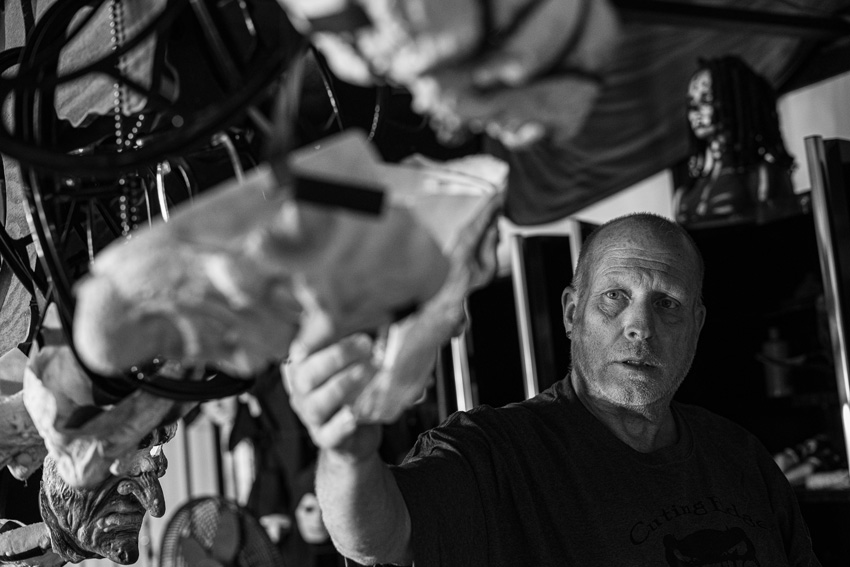
PHOTO BY JASON BRIMMER
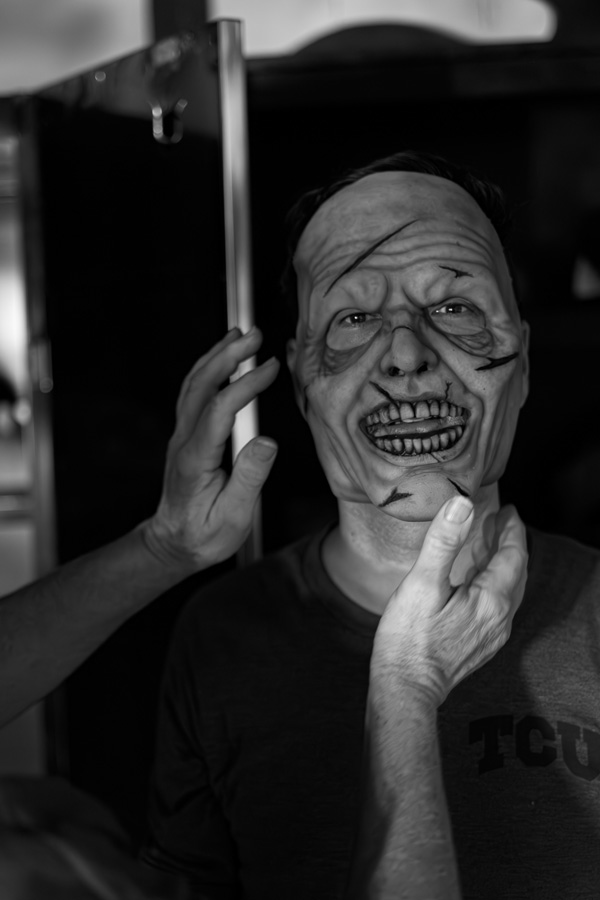
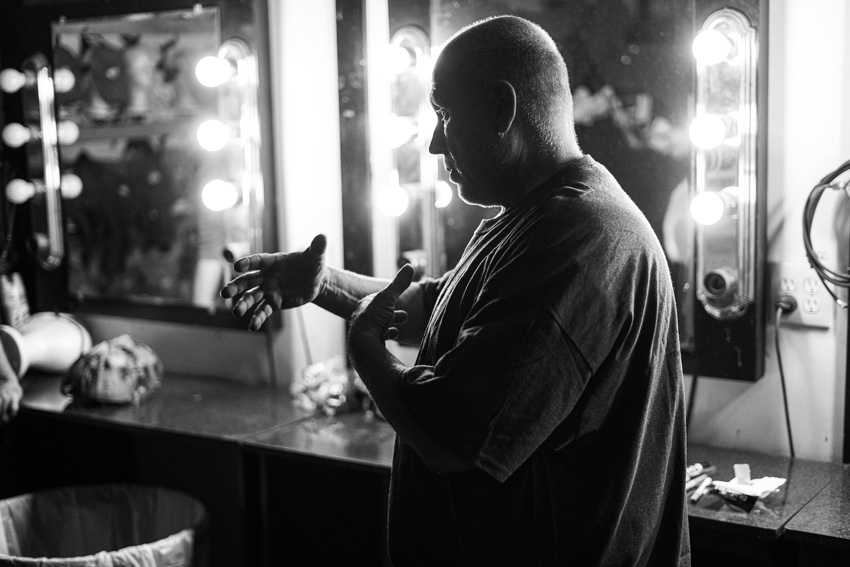
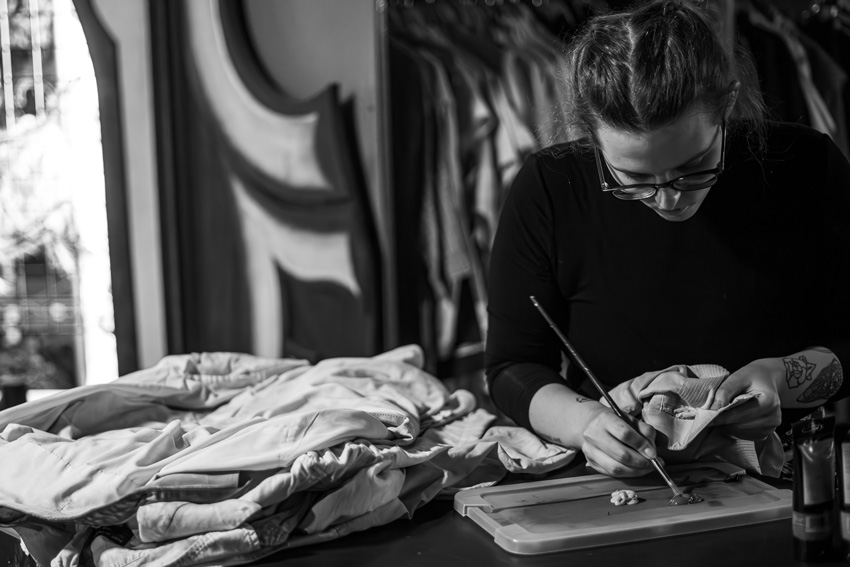
PHOTO BY JASON BRIMMER
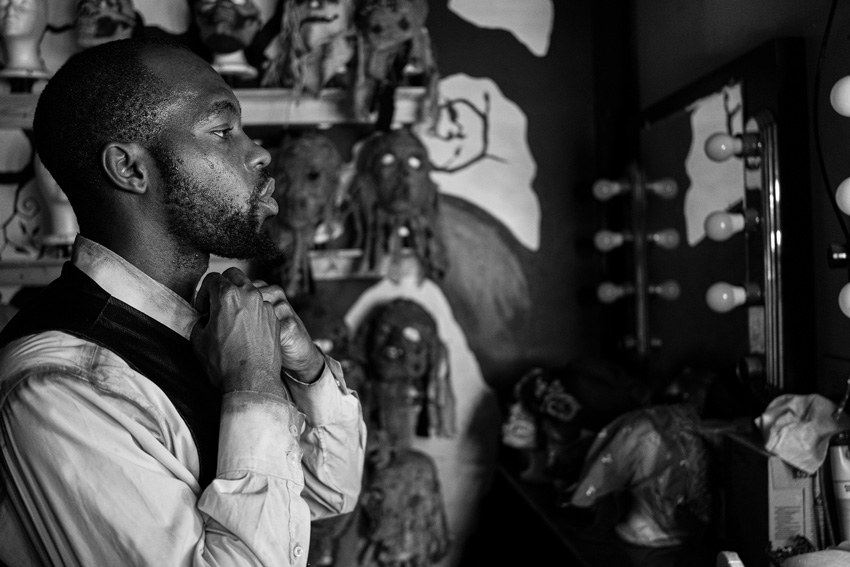
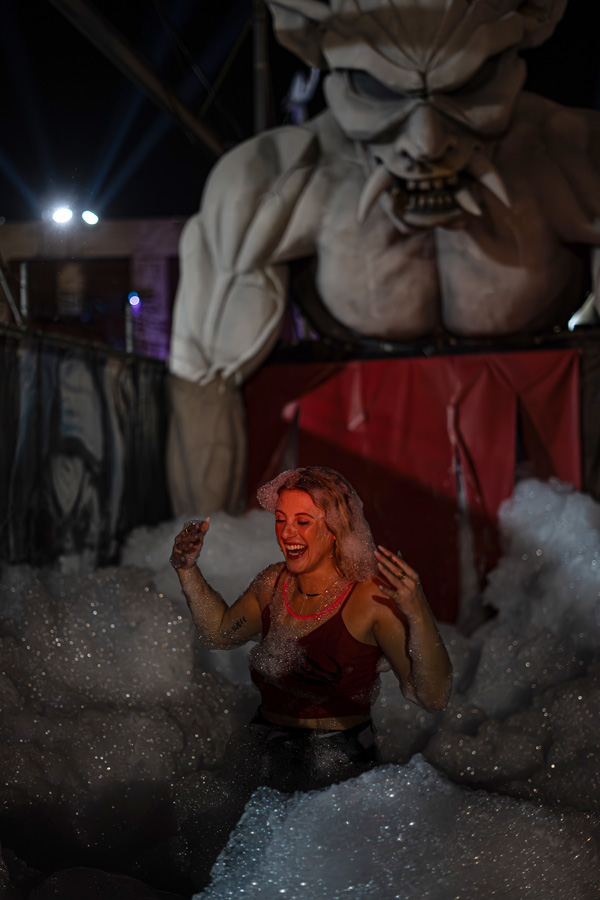
PHOTO BY JASON BRIMMER
